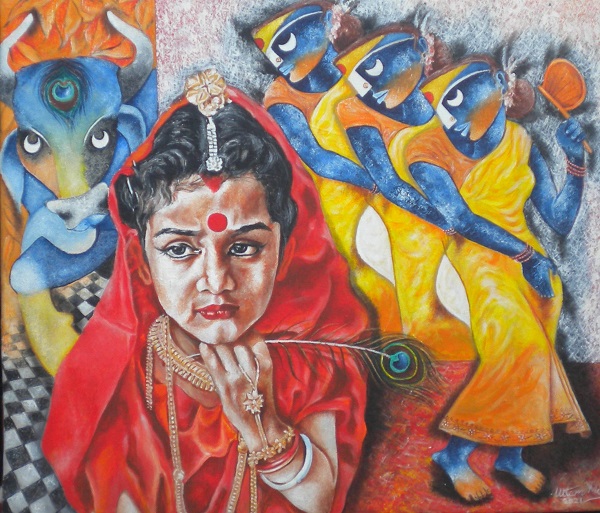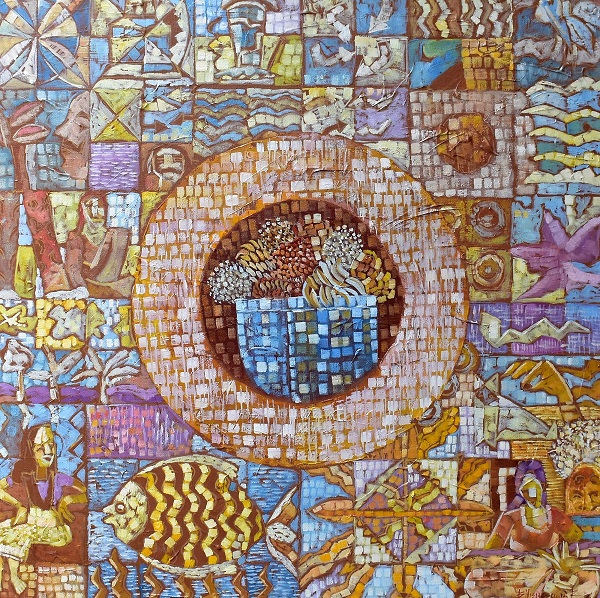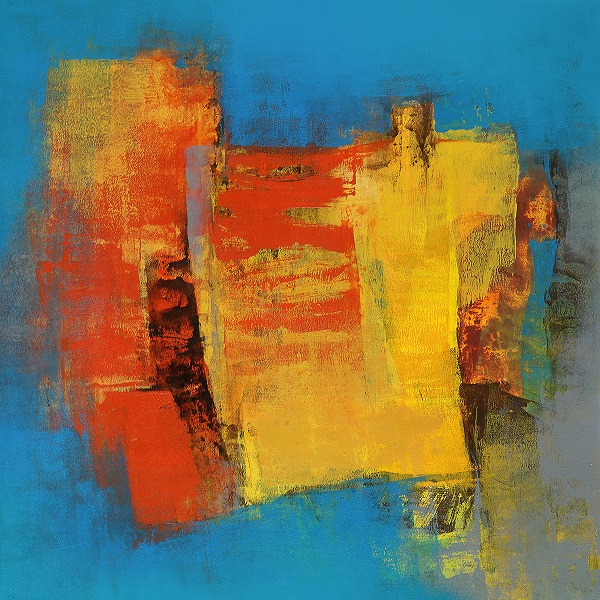
In an increasingly interconnected world, the intersection of art and technology has given rise to transformative experiences for art enthusiasts and collectors. From established online art platforms to emerging digital art galleries and independent artists, the digital landscape is teeming with possibilities. Contemporary paintings are not exempt from this trend. It has expanded beyond physical galleries, reaching a global audience through the vast expanse of the internet.
The Rise of Contemporary Art Online
In art, a significant transformation has taken place with the rise of contemporary paintings online. This shift is not merely a change in the medium but a profound evolution in how art is accessed, appreciated, and acquired.
Evolution of Art Accessibility
In the traditional art world, accessibility was often restricted by physical barriers. Art aficionados had to visit galleries and museums or attend exhibitions to witness the latest creations. However, with the advent of contemporary paintings online, these barriers crumbled. The digital realm now serves as a boundless gallery, democratizing access and helping people buy art online. Anyone with an internet connection can explore a diverse array of contemporary masterpieces, transcending geographical constraints.
Impact of the Digital Age on the Art Market
The digital age has not only redefined how we access art but has also revolutionized the entire art market. Online platforms have become virtual hubs connecting artists directly with a global audience. This direct-to-consumer approach has reshaped the dynamics of art transactions. Thus eliminating intermediaries and fostering a more intimate connection between artists and art enthusiasts. The digital age has given rise to a new era where artists can thrive outside the traditional gallery framework.
Trends in Contemporary Art Reaching a Global Audience
In the past, contemporary paintings were limited to local galleries and exhibitions. However, the digital era has transformed it into a worldwide sensation. Artists hailing from various cultures and backgrounds now have the platform to present their work to a global audience. Thus transcending geographical boundaries. This shift has resulted in a diverse tapestry of artistic expression, where influences from different corners of the globe seamlessly intertwine. The presence of contemporary artists is magnified through social media platforms and online galleries. It provides a broader audience and enables their creations to connect with people around the world.

Where to Look For Contemporary Art Online?
Contemporary paintings online have become an exciting journey for art enthusiasts and collectors. Navigating these virtual art spaces opens up a world of possibilities, allowing art enthusiasts to engage with diverse perspectives, styles, and artistic narratives.
1.Leading Online Art Platforms
In the age of the internet, prominent online art platforms have emerged as virtual galleries, showcasing a myriad of contemporary paintings. Websites like Saatchi Art, Artsy, Indian Art Ideas, and Etsy have become go-to destinations for both seasoned collectors and art enthusiasts. These platforms curate collections that span various styles and genres, providing a platform for artists worldwide to showcase and sell their creations.
2.Emerging Digital Art Galleries
As the digital art scene continues to evolve, new and exciting spaces are emerging as hubs for contemporary paintings. Online art galleries specialize in digital and new media art, pushing the boundaries of traditional artistic mediums. These platforms offer a fresh perspective, featuring works that leverage technology to redefine the art-viewing experience.
3.Independent Artists and Their Online Presence
The rise of independent artists leveraging the power of the internet has democratized the art world. Many talented creators now showcase their work through personal websites, social media, or dedicated online galleries. Platforms like Instagram have become fertile grounds for discovering emerging talents and exploring a wealth of contemporary paintings straight from the artists themselves.
4.Experts Tips for Navigating the Digital Art Space
Navigating the online art space can be both thrilling and daunting. As we embark on this journey through the digital art space, let's delve into essential tips for uncovering those one-of-a-kind contemporary pieces:
5.Diversify Your Sources
Cast a wide net by exploring various online platforms, social media channels, and independent artist websites. Unique contemporary paintings often lurk beyond the mainstream. Different platforms cater to various niches. While some specialize in traditional digital art, others may focus on augmented reality or blockchain-based art. Explore diverse platforms to discover the breadth of digital creativity.
6.Follow Emerging Artists
Keep an eye on emerging talents. Platforms like Instagram and Behance are treasure troves of undiscovered artists pushing the boundaries of contemporary paintings.
7.Art Communities and Forums
Engage with online art communities and forums where enthusiasts and artists converge. These spaces often unveil hidden gems and provide valuable insights into emerging trends.
8.Curated Collections
Explore curated collections on digital art platforms. Curators often spotlight exceptional contemporary pieces, offering a curated journey through the vast digital landscape.
9.Research Platform Credibility
Before buying art online, ensure the credibility of the online art marketplace. Look for reviews, testimonials, and the platform's reputation within the art community.
10.Artwork Authenticity
Verify the authenticity of the artwork through digital certificates or provenance records provided by the online marketplace. Authenticity is paramount in the digital art space.
11.Understand Pricing Structures
Gain insight into how pricing is determined. Factors such as an artist's reputation, the complexity of the digital piece, and limited editions can influence the pricing of contemporary paintings.
12.Artist Interviews and Features
Seek out interviews and features about the artists behind the works you admire. Understanding their inspirations and creative processes adds depth to your connection with the artwork.
13.Virtual Exhibitions and Events
Attend virtual exhibitions and events where artists showcase their works. These spaces offer a chance to interact with artists in real time and gain a deeper understanding of their artistic journey.
14.Supporting Emerging Talent
Consider supporting emerging artists by purchasing their works or contributing to crowdfunding initiatives. Your support not only fosters their artistic endeavors but also creates a meaningful connection with the art community.

Making Informed Online Art Purchases
Are you planning to buy art online? It requires a discerning eye and a thoughtful approach. Making informed purchases is not just about acquiring visually appealing pieces but also about understanding the stories and authenticity behind them.
1. Researching Artists and their Backgrounds
Before embarking on an art-buying adventure, it's essential to delve into the backgrounds of the artists whose work captures your interest. Learn about their artistic journey, influences, and the narrative woven into their creations. By understanding the context of an artist's work, you gain insight into the motivation and intention behind each piece. This research not only enhances your appreciation for the art but also enables you to connect with the artist's unique perspective.
2. Reading Reviews and Recommendations
In the digital era, the art community thrives on dialogue and shared experiences. Take advantage of online platforms to read reviews and recommendations from fellow art enthusiasts. Whether it's testimonials on an artist's website, comments on art-sharing platforms, or reviews on online art marketplaces, the collective voice of the community provides valuable insights. Consider the experiences of others who have engaged with the artist's work or made purchases. Their perspectives can offer guidance, allowing you to make informed decisions and select pieces that resonate with your artistic preferences.
3. Understanding the Value of Digital Authenticity
As the art world seamlessly integrates with the digital realm, the concept of authenticity takes on new dimensions. When making online art purchases, understanding digital authenticity becomes paramount. Verify the legitimacy of the digital art piece, ensuring it is not only an original work but also comes with proper documentation and certification. Explore the artist's use of technology, techniques, and the platform's security measures to safeguard the integrity of the digital artwork. Recognizing and valuing digital authenticity not only contributes to a trustworthy transaction but also supports the credibility of the artist and the digital art community.

Wrapping Up
As we embrace the fusion of artistry and technology, let this be a reminder of the vast world awaiting exploration in the digital realm. The transformative experiences, global connections, and diverse expressions found in contemporary paintings online mark not just a trend but a cultural shift.
At Indian Art Ideas, we invite you to continue this journey, supporting emerging talents, engaging with art communities, and making informed choices as you curate your digital art collection. Explore our curated collection and buy art online.
FAQs:
How do you know if art is contemporary?
Art is considered contemporary if it reflects the current cultural, social, and political context. Look for pieces created by living artists, often exploring innovative techniques and mediums. Additionally, contemporary art tends to challenge traditional norms and embraces a diverse range of styles and expressions.
Is contemporary art the same as modern art?
No, contemporary art and modern art are distinct periods in art history. Modern art refers to the art created from the late 19th to the mid-20th century, while contemporary art encompasses art produced from the latter half of the 20th century to the present day.
What defines contemporary design?
Clean lines, simplicity, and a focus on functionality characterize contemporary design. It embraces a minimalist aesthetic, often incorporating innovative materials and technology. The style reflects current trends and preferences, providing a sleek and timeless approach to modern living.





















